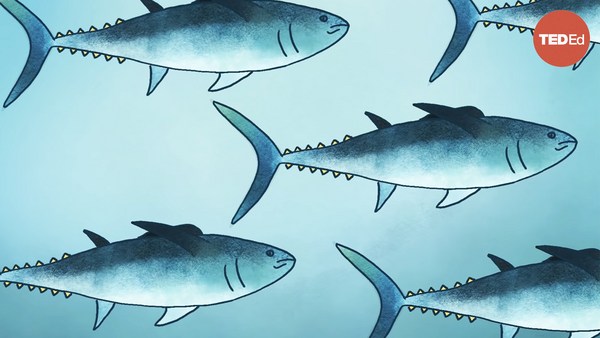In the 1930s, American industrialist Henry Ford had one overwhelming obsession: soybeans. He extracted their oil to make enamel for painting his cars. He crushed them into powder to make plastic parts. And he encouraged American farmers to grow as much of the plant as possible. But he wasn’t just feeding soy to machines. At the Chicago World’s Fair, he hosted a soy-centric feast. The ingredient had been a staple in Asian cuisine for centuries, but Ford’s dinner— full of soy substitutes for dairy, meat and wheat— took the integration of soy into food a step further. Today, soy is in so many foods that most people consume it every day without even knowing it. So what makes soybeans so versatile? And is our global obsession healthy or harmful?
Soybeans have been cultivated in Asia as early as 5,500 years ago, but since then they’ve spread across the globe. Part of soy’s success is that the crop can be grown easily and cheaply in variable conditions. And once they’re grown, soybeans have an incredibly high density of proteins and fats; ingredients which in recent years have been used in everything from mayonnaise to biodegradable plastic.
The ideal method for separating these components depends on what you’re trying to extract. To isolate soy proteins, dehulled beans are sometimes pressed through rollers to create thin flakes, and then steeped in water to draw out the proteins. Alternatively, whole beans can be simply soaked and ground into a whitish, protein rich liquid. In both cases, the resulting substance can be used to make spongy foods like tofu or filtered to produce soymilk. And at the industrial scale, these proteins can be used in various ways to help make processed foods.
Soy fats may be even more versatile. In one extraction method, soybeans are dried, cleaned, and then fed into an extruder. This machine simultaneously heats and presses the beans, producing a liquid containing soy oil and other fatty components. By adding water and spinning the mixture, components are separated into two parts: refined soy oil for things like salad dressing, and a substance called lecithin.
Lecithin is made of molecules called phospholipids, which have a phosphate head that attracts water and a tail that attracts fats. These features make phospholipids excellent for blending ingredients that naturally separate from each other. This process is called emulsification and soy lecithins are used as an emulsifying agent in a huge variety of foods. For example, during chocolate production phospholipids attach to both the fatty components of the cocoa butter and the water-soluble sugar particles, making them easier to combine into a smooth mixture. A similar process happens in powdered products that need to be instantly rehydrated. Soy lecithin bonds with the water and helps the powder disperse more quickly.
While there are other plants we can process for lecithin and proteins, soy’s mild taste and widespread availability have earned it a place in thousands of food products. But is it unhealthy to be eating this much soy? Not really. Soybeans contain many of the essential amino acids our bodies need, making them one of the best ways to get these proteins without eating meat. And the beans’ fat content is largely made up of so-called “good” fats— poly and mono-unsaturated fatty acids, which can decrease cholesterol and reduce the risk of heart disease. There are some compounds in soy that may inhibit our body’s absorption of various minerals. And about 0.3% of the general population has a soy allergy, which can be severe in rare cases. But for many people, the biggest complaint about soy consumption is the occasional increase in flatulence.
Outside our bodies however, soy is much more worrying. To accommodate the soy farms needed for heavy industry, processed foods and livestock feed, huge swaths of land have been deforested. Between 2006 and 2017, roughly 22,000 square kilometers of the Amazon were cleared for soy production. In some regions, this has also led to the displacement of farmers and indigenous communities. So if we want to keep using soy and all its byproducts, we’ll need to find a way to do it humanely and sustainably.


